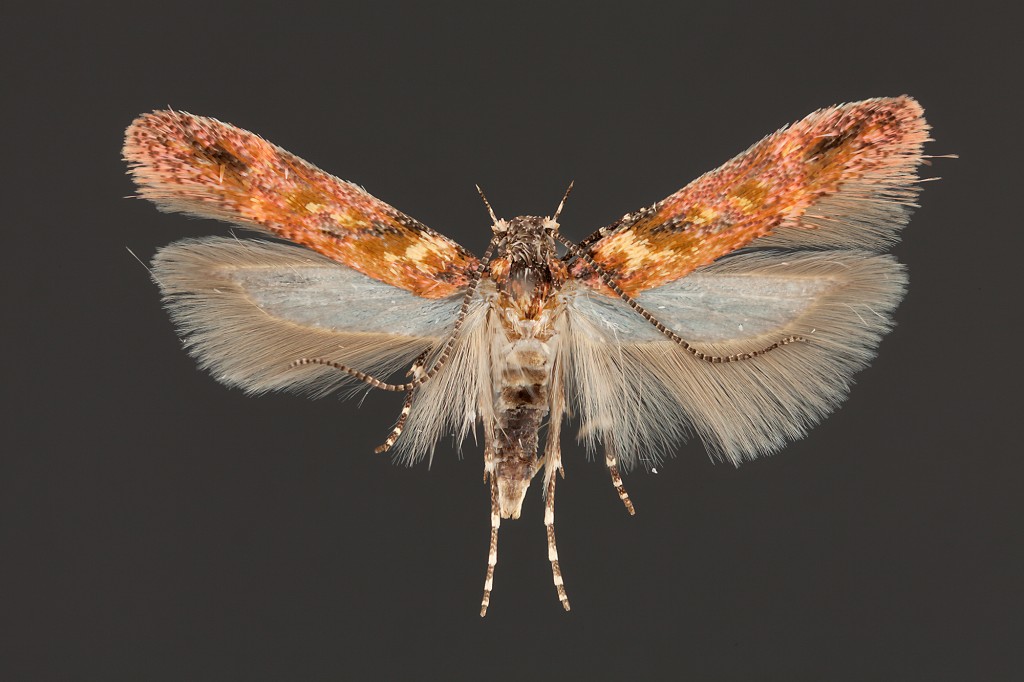Bu güvə mənim ay bir çox an nə yaxşı bir nümunəsidir – naməlum! Bu, əlbəttə bir Gelechiidae edir, Siz rəhbəri qarşısında böyük upturned palps bilərsiniz, və hindwings ucu barmaq-formalı proyeksiya. Müəyyən etmək üçün microleps asan ailələrin yalnız bir. Və ümumi gestalt bəlkə bu Gnorimoschemini edir? Kimsə bu kiçik oğlan tanıyarsa xahiş edirik Mənə bildirin, başqa mən cəhd və adı aşağı izlemek üçün ədəbiyyat hücum lazımdır. Bu gözəl güvə kənarda Prescott dağlarında edir, THE – Iyul 2010. Əksinə enjoyably, asanlıqla müəyyən deyil ki, bir çox Microlepidoptera var.


Heyrət! Vay. How often are you looking to id one of your tinsy (my technical term) moths and you discover it’s not yet been described?
I know that in the plant world, the very tiny species are frequently overlooked (nəzərdə tutulan heç bir cinas), so someone I met who studied them got published really easily. Just curious if this also applies to you/your expertise.
=)
Certainly does! There are roughly 11,000 species of moths described in the US right now – we probably have 3-4,000 left to discover if not more. I have a few dozen specimens that seem to be undescribed but haven’t been verified yet, and I’m revising a genus and will get to describe about 5 yeni növlər. And that’s nothing – a colleague is revising a family and is up over 100 new moths already. Once you get into microleps you start finding new ones all over the place!
I understand the attraction of the small and hard to identify – the jewel beetle genus Agrilus fills that role for me. One of the most popular families of beetles among collectors, yet I found an undescribed species right here in Missouri. Difficult taxonomy is a repellent to some and an attractant to others.
I didn’t realise there were so may undescribed in the US. Have all the macro moths now be described? And are there any good guide books? Coming from the UK that has only a couple of thousand moths in total.
Hi Justin- Yox, we’re a long ways off from saying all the marcos are even described. I know of a few dozen new species of medium to large Noctuidae that are awaiting description. Each year there are just as many published – one of the larger and more impressive was Lithophane leeae described in 2009.
A great book for western moths is “Qərb Şimali Amerika Ay, Jerry Powell and Paul Opler.” It’s a text-book sized volume that attempts to cover most representative genera of western moth species (including micros). For eastern moths there is the older “Eastern Moths” by Charlie Covell.